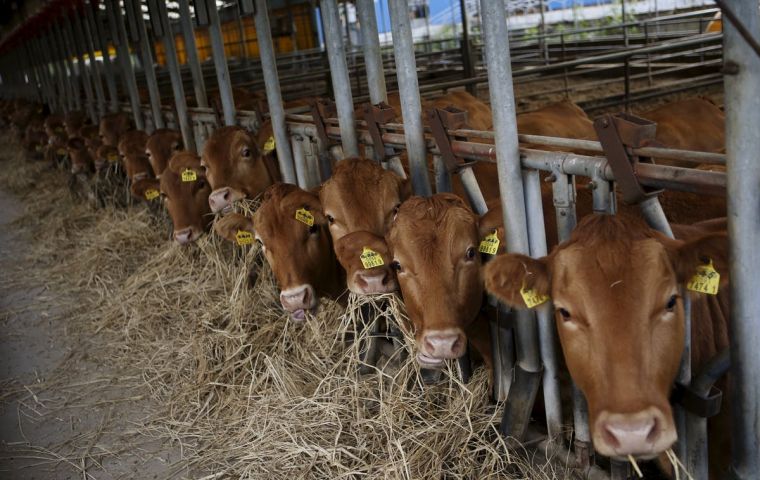MercoPress. South Atlantic News Agency
Report on per capita carbon “food prints” criticizes beef and dairy consumption
 Only the per capita carbon “food-prints” in India and Indonesia are low enough to ensure the Paris climate target of capping global warming at 1.5 degrees Celsius
Only the per capita carbon “food-prints” in India and Indonesia are low enough to ensure the Paris climate target of capping global warming at 1.5 degrees Celsius If everyone alive ate steaks and dairy the way Brazilians and Americans do, we would need an extra five planets to feed the world, according to the first report to compare the carbon emissions from food consumption in Group of Twenty (G20) nations, released on Thursday.
Among the world's top economies, only the per capita carbon “food-prints” in India and Indonesia are low enough to ensure the Paris climate target of capping global warming at 1.5 degrees Celsius, according to the Diet for a Better Future report.
In China, where sustained economic growth has boosted consumption of meat and imported foods, the average diet – on a planetary scale – would exceed the 1.5 degree Celsius threshold by nearly two-fold.
Producing food for Earth's 7.7 billion people is responsible for a quarter of the global carbon emissions that drive climate change. About 40% of that comes from livestock production and food waste, with the rest generated by rice production, fertilizer use, land conversion and deforestation to accommodate commercial crops.
“Currently, individuals in a handful of countries are eating way too much of the wrong foods at the expense of the rest of the world,” Brent Loken, global food lead at World Wide Fund for Nature (WWF) and lead author of the report.
These imbalanced diets by a relative handful of rich countries are “to the detriment of climate, health and economies”, he said.
The report by EAT – an Oslo-based non-profit that has led peer-reviewed research on the nexus of diet, health and climate change – also rated G20 national dietary guidelines, projecting the carbon footprint they would produce if followed.
Interestingly, this ranking roughly mirrors actual consumption.
Argentina tops the list with a diet exceeding climate thresholds nearly five-fold, followed by Canada, Brazil, the United States, Russia and Australia. At the other end of the spectrum, the countries with the most climate-friendly dietary guidelines are Indonesia, India, South Korea, China and Japan.
“This report makes it possible for the first time to compare and track the carbon emissions baked into each country's national guidelines,” said Corina Hawkes, director of the University of London's Centre for Food Policy.
How the world sources food also has an impact on disease, including viral outbreaks such as the new coronavirus, the authors said. “The current pandemic has highlighted just how broken our food system is,” said Loken.
“The food that we eat and how we produce it are also key drivers in the emergence of deadly viruses such as the one that leads to COVID-19.”
Deforestation in particular erases the boundary between human settlements and natural reservoirs of disease in wild animals.
The problem of waste is concentrated in wealthy nations, Loken said. “It's an issue mainly because rich people throw away too much food,” he said.
The report argues that there are sweeping benefits – both for health and economies – to shifting toward healthier diets rich in legumes, vegetables, fruits and nuts, and light on dairy and meats, especially beef and lamb.
Earlier research has calculated that an overhaul of the global food system could unleash trillions of dollars each year in new business opportunities, and save even more in reduced damages to people's health and the planet.




Top Comments
Disclaimer & comment rulesCommenting for this story is now closed.
If you have a Facebook account, become a fan and comment on our Facebook Page!